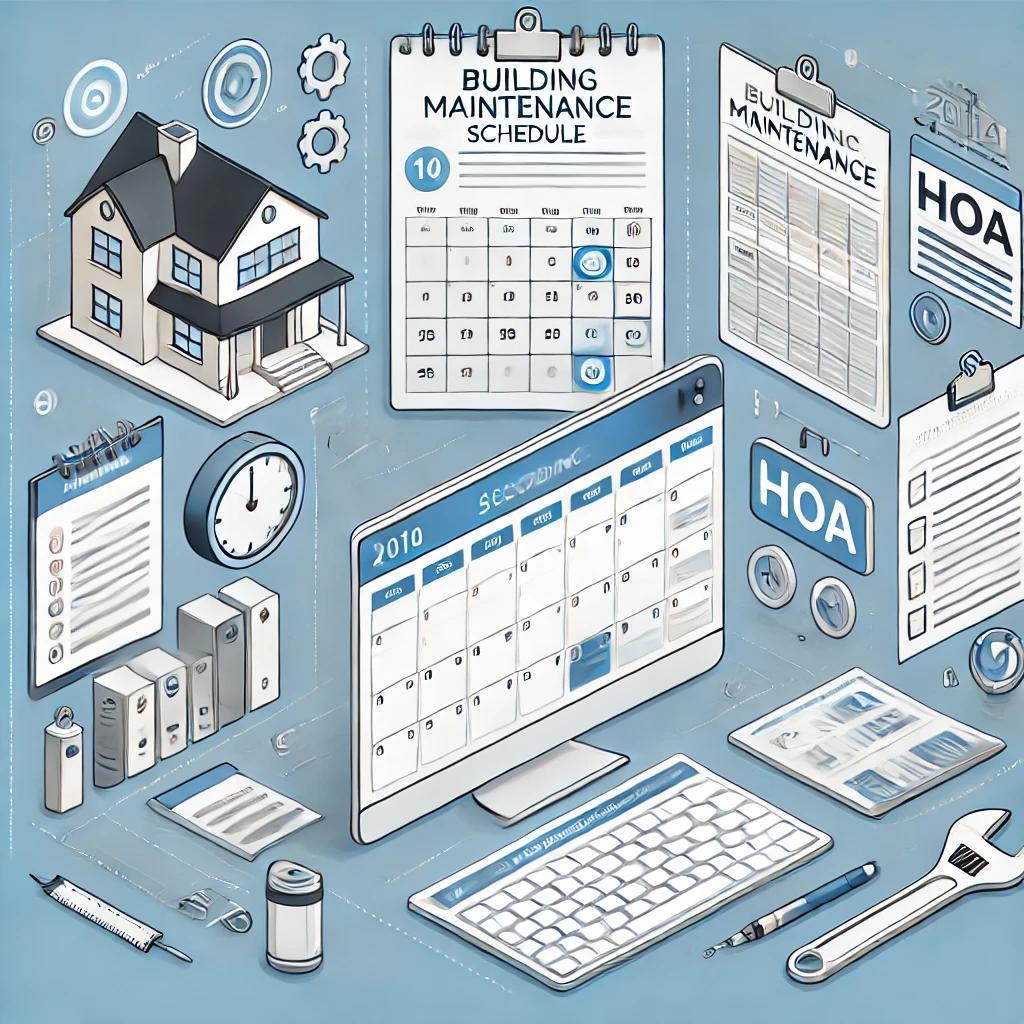Building Maintenance Schedule for Your High-Rise Community

Designing a thorough maintenance schedule for your high-rise community should be a key focus for everyone from the board members to the residents and property management team. The advantages of having a preventive maintenance plan are endless. They prevent the early failure of various mechanical systems, extend the lifespan of almost every system in the community, and even help predict when repairs or replacements might be necessary.
Such planning leads to improved budgeting for the community's maintenance needs. Crucially, a well-structured maintenance schedule minimizes service disruptions, benefiting the whole community. The principle is simple: when residents are content, the entire high-rise thrives.
With so many elements to manage within a high-rise community, establishing a maintenance program that covers every aspect can be overwhelming. However, engaging a licensed professional team alongside an experienced property management firm can simplify this process significantly.
1. Collaborate with Experts
To create, execute, and oversee a comprehensive preventive maintenance schedule, seeking the aid of seasoned professionals is essential. While a reputable community association management company can formulate and manage your plan, it is equally important to have a committed in-house maintenance team. Alongside, external professionals who have specialized knowledge of technical systems should be involved.
2. The Benefits Outweigh the Challenges
Engaging in preventive maintenance significantly aids in cost management and loss prevention. An organized schedule helps you foresee repair and replacement expenses throughout the year, allowing for a smooth and surprise-free budgeting process. Regular inspections and maintenance efforts ensure that both the property’s value and residents’ living experience are maintained at high standards.
3. Prioritize High-Rise Maintenance
High-rise buildings, by their nature, demand more maintenance, especially in response to seasonal shifts. These structures involve intricate systems such as HVAC units, plumbing, boilers, and more. An experienced property management company will understand the critical nature of preventive maintenance and will be equipped to help implement a successful plan, which in turn benefits the whole community.
4. Develop a Practical Schedule
Although establishing a maintenance schedule can seem daunting, the outcome is rewarding. Over time, all stakeholders will appreciate the benefits and be committed to maintaining the high standards of the high-rise. It's not only about making life smoother and saving costs but also fostering an environment where residents can thrive peacefully.
The essence of a solid maintenance plan lies in attention to detail. Tackling minor issues before they escalate can result in significant savings. Start by thoroughly documenting the state of the property, covering everything from building systems to common and private spaces. Build an exhaustive list of components for inspection and maintenance, and divide your schedule into categories: monthly, quarterly, semi-annual, and annual duties.
5. Implement Your Strategy
After compiling a detailed list of systems and equipment, collaborate with manufacturers to determine optimal maintenance schedules. Once this groundwork is laid, activate your plan to stay ahead of any unexpected maintenance challenges.
Following a preventive maintenance plan enriches your entire high-rise community—from the board members to staff and residents alike—by delivering continuous benefits through proactive planning.





